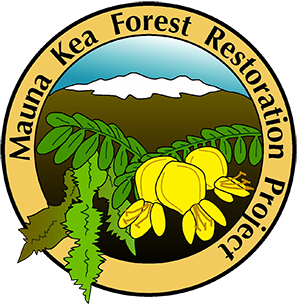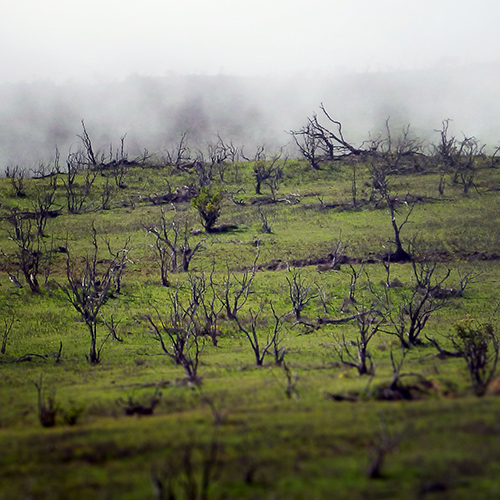THREATS
Mauna Kea’s high-elevation dry forest and the palila that live here are under constant threat from introduced animals, plants, insects, diseases, drought, and fire.
|
Cattle Ranching
Most of the forest below 8,000-ft. was converted to pasture.
Formal leases of the Crown and Government land holdings were granted to ranchers on mountain lands in the 1850s. With this began the large scale conversion of forest into pasture. Most of the māmane forest that historically occurred below 7,000-8,000 feet has been lost. The remaining māmane forest is now merely a band of forest wrapped around Mauna Kea bounded by pastures below and the rocky alpine above. The only area where palila still survive is on the southwestern slope of Mauna Kea where māmane forest still extends down to 6,000 feet. This highlights the importance of maintaining a large elevation gradient of māmane forest for ensuring the long-term survival of palila.
With over 150 years of grazing, the māmane forest slowly died off giving way to pasture grass.
|



